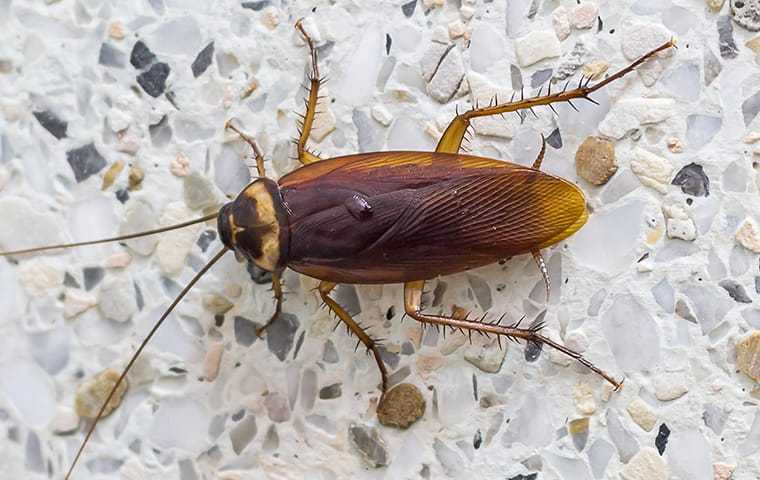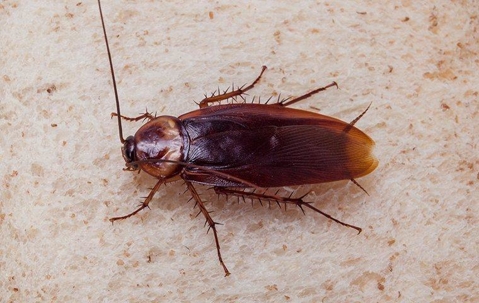American Cockroach Identification Guide
What are American cockroaches?
American cockroaches are one of the largest species of household invading roaches in Texas. They like to live outside but do move indoors, seeking moisture, food, and safe shelter. These cockroaches are only second to German cockroaches as the most common in the U.S.
American cockroaches grow to between one and a half to two inches in length, making them difficult to miss if they are scurrying throughout your home. They have a long oval-shaped bodies, are a reddish-brown color with faded yellow edges on the thorax, and though they have fully developed wings, they rarely use them.

Are American cockroaches dangerous?
American cockroaches carry a wide variety of dangerous bacteria, human pathogens, and parasites and have no business in our homes. As cockroaches move throughout a structure, they contaminate food and surfaces and produce foul-smelling secretions.
The shed skins and excrement that American cockroaches produce can trigger allergies in people. Itchy eyes, congestion, runny noses, and skin rashes are common conditions people experience when cockroaches are present. In addition, young children living with cockroaches have a higher risk of developing asthma.
Why do I have an American cockroach problem?
Because they feed on the same foods as we do, it makes sense that American cockroaches often make their way into our Cypress area yards, homes, and businesses. The smell of food in compost piles, trash cans, recycling bins, and kitchen areas is very tempting to these scavengers. American cockroaches move inside on their own or are introduced accidentally by us. Boxes, potted plants, and furniture may be harboring American cockroach adults, nymphs, or eggs.
Where will I find American cockroaches?
City dumps, steam tunnels, sewers, flowerbeds, garden areas, and areas behind tree bark provide the dark, moist environments these roaches prefer. Since they often live near our homes and commercial buildings, it is easy for them to move indoors when it becomes too dry outside or when searching for food. Cracks in the foundation, gaps under doors, and open windows and doors make common entry points for these large insects. Once inside, they like to hide in humid, dark areas of a home, such as kitchens, bathrooms, and basements. Some of their favorite hideouts include:
- Spaces behind bathtubs and showers.
- The bottom of laundry hampers or piles of dirty laundry.
- Near sump pumps and drains.
- Cabinets under sinks.
- Inside boxes and on potted plants.
How do I get rid of American cockroaches?
A professional solution is the best way to rid your Greater Cypress area property of American cockroaches. At TNT Home & Commercial Services, we take pride in being a one-stop-shop for all your home pest control or commercial pest control needs! With over 20 years of experience in the pest control industry, exceptional services, and a focus on customer satisfaction, you can trust us with your pest control needs! To learn more about eliminating American cockroaches from your property, reach out to TNT Home & Commercial Services today.
How can I prevent American cockroaches in the future?
More than an inconvenience, pests can be dangerous and cause damage. In addition to our professional pest control services, use the following tips to keep American cockroaches out of your yard and home:
- Remove trash from your home, wash dirty dishes, vacuum, and wipe down counters daily.
- Keep trash bags in cans with locking lids.
- Keep pantry items and baked goods in plastic or glass containers with covers.
- Before going to bed at night, pick up uneaten pet food to keep hungry roaches from feasting on it.
- Keep shrubbery, grass, and weeds cut back away from your home’s exterior.
- Maintain a barrier between any mulch in flower beds and your foundation.
- Carefully inspect your foundation and seal any opening you find.
- Add door sweeps to the bottom of exterior doors.

